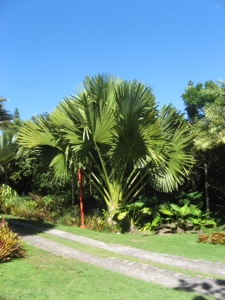A series of recent events inspired the title to this post. First, on leaving the ‘11 mile beach’ anchorage on Barbuda, we wanted to take a look at the apparently pink sands on Cocoa Beach before heading south again. It should have been an easy 10nm sail of maybe 1.5-2 hours. It actually took 3 hours and required us to motor into wind for the final half of the passage. But it was worth it. Contrast this photo of Cocoa Beach, Barbuda
with this of Jolly Harbour, Antigua.
And where we are now, at Gustavia on St Barthélemy (aka St. Barts) is even more crowded with boats.
But I digress… as we prepared to depart from Cocoa Beach the following morning, there was a loud ‘clunk’ on the keel. We had hit an isolated rock! Needless to say we beat a hasty retreat and headed south for Jolly Harbour. The main reason for going there was to clear out with the all-powerful triumvirate - customs, immigration and port authority. At least on Antigua the system is semi-computerised, eliminating the need to fill two or three different forms by hand in quintuplicate. Also took the opportunity to get some laundry done. Yes life’s mundane tasks continue, whether in the Caribbean or North Yorkshire. A couple of nights at anchor in Jolly Harbour was enough. On 31 January, we set sail west for the small island of Nevis, once a British colony like it's near neighbour St Kitts but now coupled as one independent state.
The passage started well, a nice downwind passage in a force 4-5 ENE wind. A good size fish was caught mid-morning but thinking it was a kingfish (possibly infected with ciguatera) and in his haste not to let it die needlessly, the skipper threw it back before it was positively identified. In fact it was a Tuny fish (the French call these Ti Thon). Fortunately two more Tuny fish were caught a couple of hours later.
As the afternoon wore on, the sky became overcast, the wind gradually increased and we saw a couple of squalls coming towards us from behind. Squalls are never good news as not only does one get very wet but the wind changes direction and plays havoc with the sail set if one is unprepared. And of course having had such an easy downwind passage thus far, Follyfin was sailing under her full main sail and jib - omuch too much canvas for gusts of 35 knots! So then the problem became reducing the sail area (technically known as reefing the sails) in such a high wind. This was eventually achieved with much flapping and blowing and turning a complete circle.
Soon the lee of Nevis was obtained and everything calmed down. The capital is Charlestown and mooring buoys have been laid for visiting yachts, thus allowing the sea grass to grow back. You might think that this would make life easier for us but no… the first one we selected had no pick-up line and the second one had such a long pick-up line that it wound itself round our keel and we ended up facing backwards! By the time this problem had been sorted it was pitch dark and skipper and crew were both exhausted.
Everything looked much better the following morning as we approached Charlestown to make our clearance with the Triumvirate again.
A short bus ride took us up to the Golden Rock Estate, which goes back to 1801 when it was owned by Edward Huggins. It is now mainly owned by a two New York artists. The estate is half-way up the mountain and borders the rain forest. The original historic buildings have been skilfully blended with modern additions but the gardens are definitely the main attraction. Pictures speak a thousand words…
It is now a rather fancy hotel and restaurant with prices to match but luckily they don't mind yachts-people arriving for lunch in their shorts. This is a place definitely worth revisiting if ever the opportunity arises.
This post is being composed whilst at anchor near Gustavia on St.Barts. The passage here today from Nevis was not without incident either… before we even started, we had trouble slipping from the buoy (see above). In fact, it took a whole hour to free one of our mooring lines from the wretched mooring buoy, a job that is normally accomplished in less than a minute. The passage itself was pretty good but the seas were across us and quite big (2-3m) so though uncomfortable, we made good time - top speed 9.4kn, average 7.2kn. Once into the lee of the island we saw with horror a veritable forest of masts. Finding a vacant spot to anchor amongst that lot was difficult but what with onshore swell in one place and weed on the sea bed in another, it took three attempts before the anchor dug in enough to hold the boat.
So you see, it's not all plain sailing!













No comments:
Post a Comment